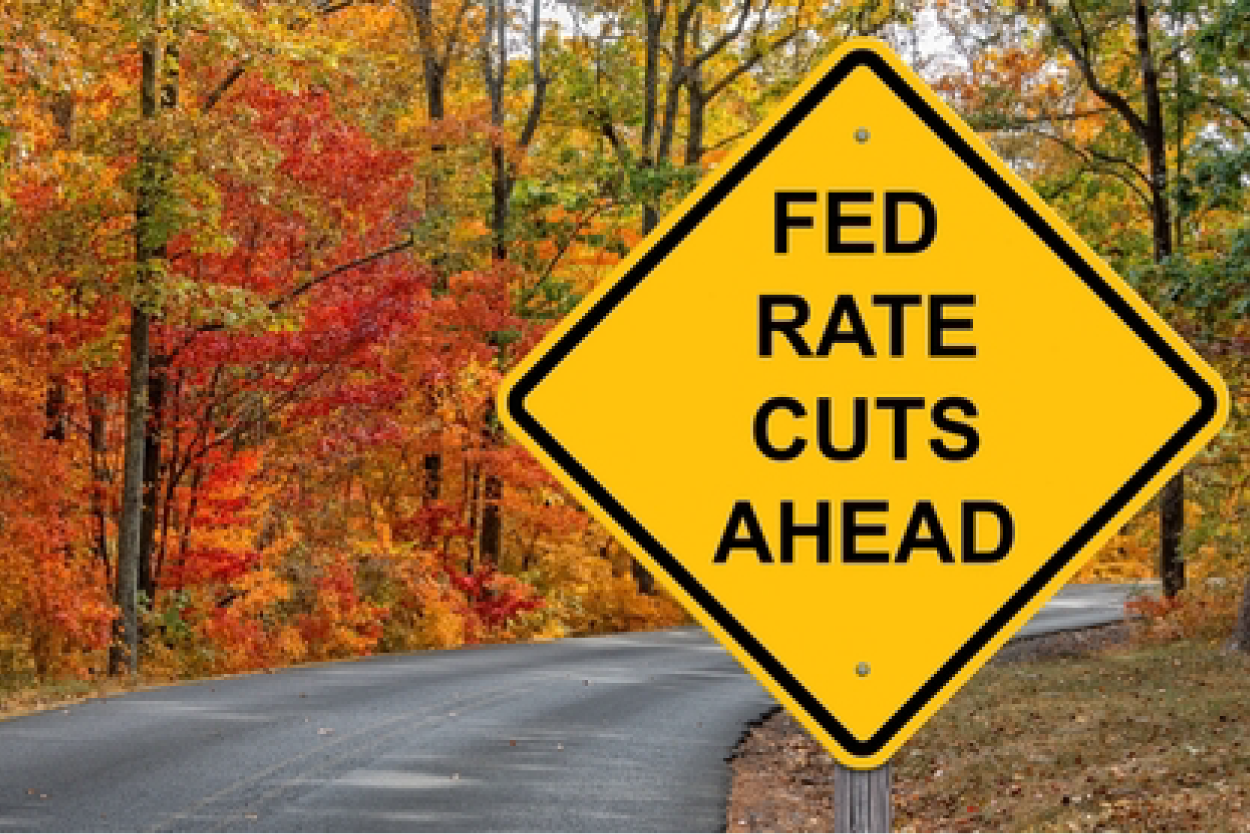7 min read
IS PAST PROLOGUE?
“Past performance is not indicative of future results.”
3 min read
Crewcial Partners
:
Sep 19, 2024 2:19:18 PM

The Federal Reserve’s recent decision to cut interest rates by 50 basis points marks a significant turning point in the US monetary policy landscape. This cut, with more likely on the horizon, is intended to ease borrowing costs and provide relief as economic uncertainties grow, particularly with regard to soft employment readings. However, at Crewcial Partners, we see potential risks outweighing the short-term benefits, particularly for non-profit investors.
While the immediate reaction may be one of optimism, the broader context suggests a more complicated picture. A total of 125 basis points of cuts by the end of the year appears to be the consensus. If realized, this would bring the Federal Funds rate to a range of 4.0% to 4.25%. While this may seem like a welcome relief for borrowers tied to a floating interest rate, the implications for borrowers tied to longer-term rates and overall market conditions could be far less favorable.
While early signs point to the Federal Reserve navigating a soft-landing, an aggressive rate-cutting cycle could steepen the yield curve, with the potential for longer-dated yields on the ten-year and 30-year treasuries to rise significantly, perhaps to levels of 4.5% or even 5.0% in short order. While this may seem a bold forecast, it reflects the underlying dynamics of an economy dealing with both sticky inflationary pressures and nominal GDP that appears to be growing at a consistent 5%. If such a scenario unfolds, the risks of a slowdown in real GDP could ultimately lead to a "stagflationary" scenario, where inflation remains elevated while real economic growth stagnates
For non-profit investors, this environment introduces several risks.
Non-profits typically rely on balanced portfolios to meet their long-term financial goals, often with a mix of equities and fixed income to manage risk and generate returns. However, in a steepening yield-curve environment, fixed-income returns may be less stable than expected, particularly if long-term rates rise while short-term rates fall. This dynamic could erode the value of intermediate- and long-duration bonds, causing a negative impact on the fixed-income portion of portfolios.
Moreover, a stagflationary outcome would create headwinds for equities, particularly in growth-oriented sectors like technology, which have been a dominant driver of returns for non-profit endowments over the past decade. Higher borrowing costs and slower economic growth would likely weigh on corporate earnings, making it harder for these companies to sustain the high valuations they’ve enjoyed.
So, what can non-profit investors do in the face of these challenges?
Now, more than ever, it is crucial for non-profits to reassess their asset allocation. At Crewcial, we advocate for a strategy rooted in broad diversification and multi-dimensional risk management. This might mean reducing exposure to interest-rate-sensitive sectors and increasing allocations to alternative assets like infrastructure or real estate, which can offer more stable returns in a volatile rate environment.
This also means incorporating more diverse perspectives into portfolio management, particularly from underrepresented fund managers like women, people of color, or those with less traditional educational backgrounds. These managers can bring innovative strategies that challenge the status quo and homogenous groupthink, which is critical in navigating market volatility. Studies show that first-time fund managers, especially those from diverse backgrounds[1], frequently outperform their more established peers by identifying risks and opportunities others might miss[2].
Prioritize sustainable investments that focus on long-term resilience, which could provide an effective hedge against market volatility over the long term. Companies that prioritize sustainability are often better prepared for regulatory changes, shifts in consumer behavior, and durable market trends such as the transition to clean energy. These companies typically exhibit more stable financial performance over longer periods regardless of the economic environment. By integrating environmental, social, and governance (ESG) criteria, non-profit investors can reduce exposure to sectors that are particularly vulnerable to economic downturns while investing in next-generation industries poised for growth, such as renewable energy, green infrastructure, and sustainable agriculture, to successfully navigate the challenges posed by the changing interest-rate environment.
As we move into a period of heightened uncertainty, vigilance and flexibility will be key. The rate cuts may provide short-term relief, but for long-term investors like non-profits, preparing for a more volatile and potentially less forgiving market environment is critical. By staying disciplined, diversified, and forward-thinking, non-profit investors can maintain resilience and navigate this complex landscape to continue to meet their financial goals while supporting their broader missions.

7 min read
“Past performance is not indicative of future results.”

5 min read
In our most recent commentary on crisis negotiation and its application within financial consulting, we explored the parallels between these two...

4 min read
In our most recent commentary on crisis negotiation and its application within financial consulting, we explored the parallels between these two...